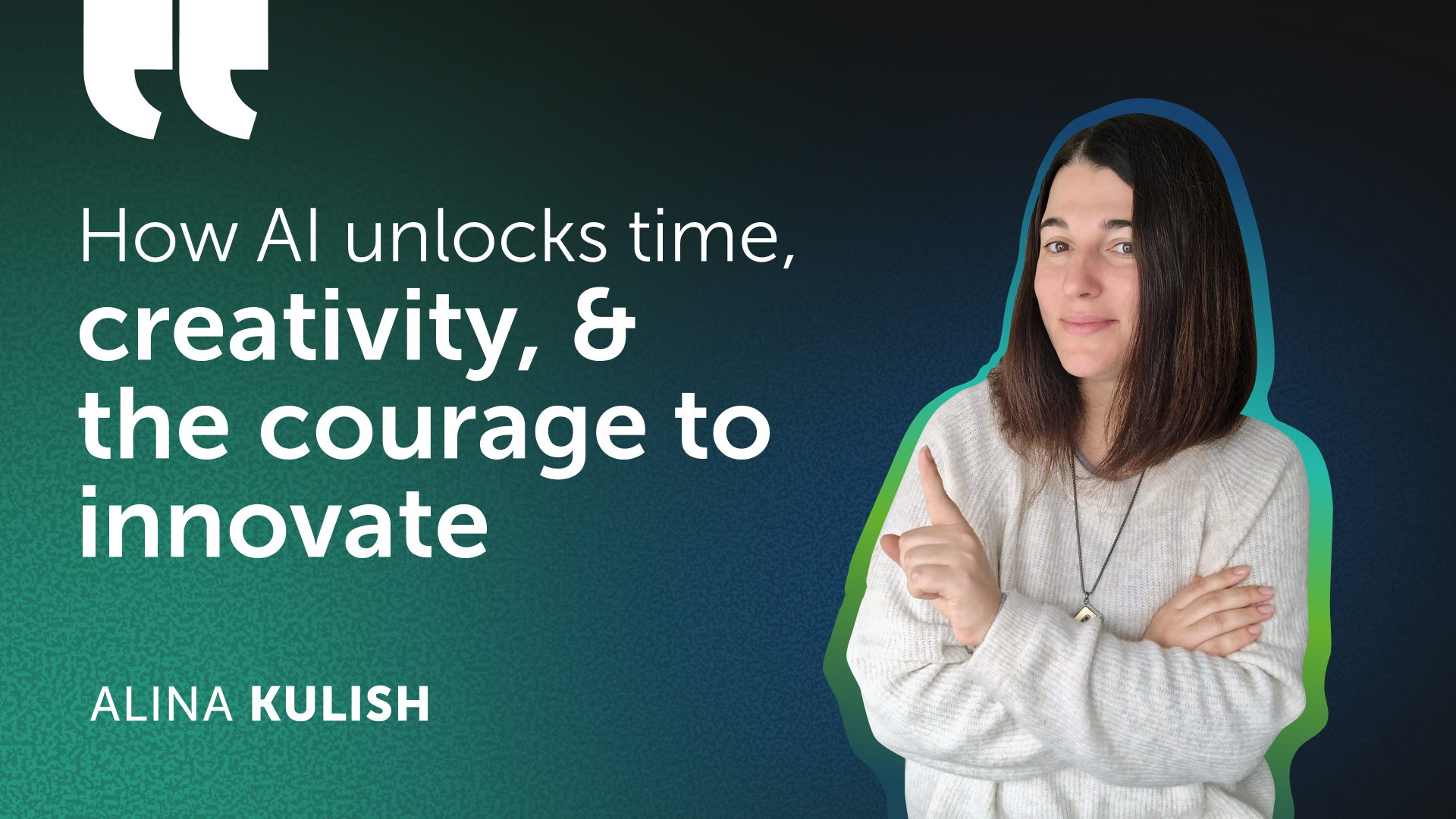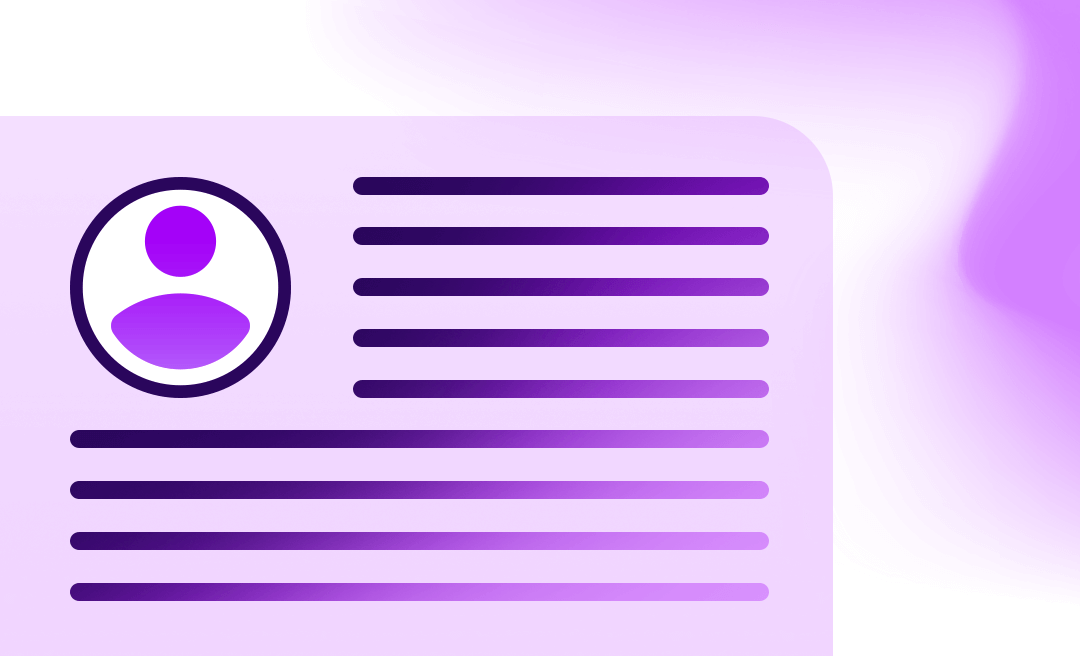How AI unlocks time, creativity, and the courage to innovate
Together with FR Media, we’re launching a series of inspiring stories from tech experts about their journey into AI. Alina Kulish, Lead Software Engineer at EPAM, shares her insights.

“Using AI tools felt embarrassing”
— I'm one of those people who remember the early days when using AI tools felt almost... embarrassing. Like, if someone caught you using ChatGPT during screen sharing, you'd rush to close the tab, as if you had something to hide.
At first, I used ChatGPT for personal needs. True story: AI helped me buy a car by coaching me on what questions to ask dealers — it turned into my personal car-buying assistant. But soon, I realized there was far more potential than just fun use cases.
I started using AI for work, for example: generating documentation, writing unit tests, debugging, and more. Every experiment taught me something new about prompting and areas where AI can be used. Eventually, I became responsible for creating a course for JavaScript developers to boost their productivity with AI tools. I also co-created content about prompting and building useful workflows.
But as a developer, I couldn’t stop at just using tools — I was going to look under the hood. Together with a group of curious engineers, we started exploring the OpenAI API, vector databases, LangChain.js, and LangGraph. We wanted to build real GenAI apps and AI agents ourselves — and we did! So far, we've released a four-module course for JavaScript devs, and we’re currently working on a new one focused on how AI agents communicate with each other.
Note: Alina Kulish is also one of the authors of the EngX AI-Supported Software Engineering course — join to integrate GitHub Copilot and ChatGPT into your daily work for streamlined and efficient development.
“Building an AI app was something only my smarter colleagues with three monitors could do”
— I clearly remember the moment I chose to step into the world of AI. Well, at least I know I was in pajamas, sitting by my laptop.
At first, I honestly thought building an AI app was something only my smarter colleagues with three monitors could do. I figured I’d just be one of the “users” who learned how to debug with ChatGPT or create presentations. But then curiosity — and maybe a tiny bit of stubbornness — kicked in. I thought, “Wait... what if I actually try to build something myself? If I fail, I’ll just never share it with anyone.”
So, I spent a few weeks deep-diving into documentation, running experiments, and occasionally breaking things on purpose — for science. And then, my very first AI app responded to me… right there in the console. I considered myself a hero.
“AI gave me something invaluable — time”
— One of the biggest “wow” moments for me was realizing I could build an entire video course for Angular developers with AI by my side. From planning the structure to writing learning materials, creating presentations, and even polishing slides — everything became faster and easier. Suddenly, tasks that used to take hours… didn’t.
Also, I started building my own prompt library for tricky tasks, learning how to chain prompts together and break problems down step by step. That one skill alone gave my productivity a massive boost.
And AI gave me something invaluable — time. I finally started posting on LinkedIn, sharing what I learned, and even running tech talks. Before AI tools, I’d spend my evenings just trying to finish everything. Now, my evenings have space for... doing nothing. Instead of racing through every task, I can take a walk outside, sit by the sea, or simply enjoy a sandwich without multitasking. That quiet space is where creativity thrives.
“We need people who don't just collect AI tools like Pokémon cards”
— I’d say one of the most important skills in the AI era is analytical thinking. With so many tools, updates, and hype flying around, it’s easy to get lost in the noise. We need people who can stay calm in the chaos, identify what’s truly useful, learn it quickly, and apply it in real life — not just collect AI tools like Pokémon cards. Do you remember Pokémon Go? Am I that old?
AI is powerful, but it still doesn’t have what makes us human: abstract thinking, deep intuition, and the ability to notice when something just feels off. We’re also pretty good at spotting bias, asking weird yet important questions, and thinking beyond the obvious. So, I believe AI won’t replace us.
“AI should make us more human, not less”
— I believe the most important thing isn’t just building AI but learning how to use it wisely. AI is already powerful enough to make our lives easier, solve real problems, and help us work smarter. But it’s also powerful enough to cause serious harm if we’re careless.
It might sound like a cliché, but I truly hope humanity chooses the smart path. I’d love to see AI become a true partner — something that supports our creativity, improves healthcare, education, and the way we work — not a tool used to compete, control, or harm one another.
So yeah, dream big — but we need to stay responsible. That’s my vision: AI should make us more human, not less.
“Stop trying to learn everything”
— To stay relevant in an AI-powered workplace, stop trying to learn everything. It’s impossible, and if you try, you’ll just end up overwhelmed — and probably annoyed.
Instead, take a step back and ask yourself: “What parts of my daily work are repetitive or time-consuming… and could actually be done by AI?”
Start small. Identify a few tasks that eat up your time but don’t require your full brainpower — things like writing reports, drafting emails, or organizing notes.
Next, find tools that can help with those specific tasks. Learn just enough to start using them in real life. Once you’re comfortable, you can go deeper — maybe build your own prompt library or set up automated workflows using tools like Zapier or Make.
The key is to stay focused. Don’t chase every new AI trend. Instead, pick real problems you want to solve and let AI help you solve them.
“I use AI to help me learn AI”
— I really love a good YouTube deep dive. Sometimes it’s the fastest way to understand how a tool works without falling asleep. But honestly, my main go-to is official documentation. It’s not always the most exciting read, but it’s usually the most accurate and up to date.
I don’t always read every word. I use AI to help me learn AI — for summarizing long docs or explaining tricky concepts like I’m five. It saves time and keeps me from banging my head against the screen.
So, my advice? Mix it up. Watch videos for the big picture, trust the docs for the details — and don’t hesitate to let AI help you understand AI.

_(1).png)
.png)